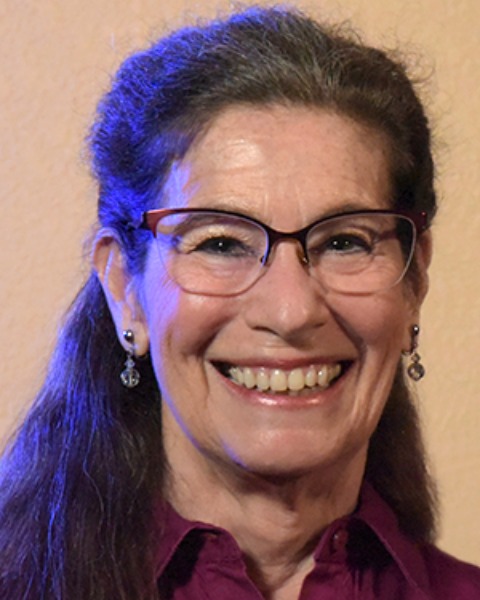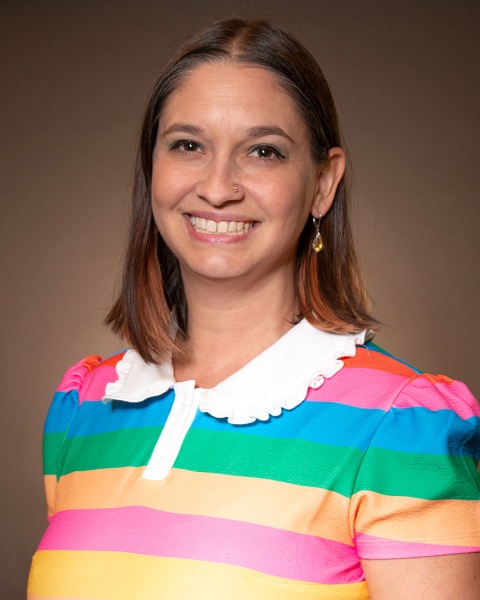Health Evaluation
Improving Communication with Populations Experiencing Limited Health Literacy: Applying CLAS and NIH Clear Standards in Text Messaging
-

Natalia Rodríguez-Gonzalez, PhD (they/them/theirs)
Research Analyst
Arizona State University -SIRC
Phoenix, Arizona, United States -

Wendy Wolfersteig, PhD (she/her/hers)
Director, SIRC Evaluation & Research Associate Professor
Arizona State University -SIRC
Phoenix, Arizona, United States -
.jpg)
Maria Aguilar-Amaya, DM, MAOM
Associate Director, SIRC Evaluation & Faculty Associate
Arizona State University -SIRC
Phoenix, Arizona, United States -

Mara de Luca Funke, MPH (she/her/hers)
Senior Research Specialist
Arizona State University-SIRC, United States
Presenter(s)
Location: Room 104
Abstract Information: Using the federally accepted standards for Culturally and Linguistically Appropriate Services for health care, and the National Institutes of Health Clear Communication guide, researchers at Arizona State University (ASU) developed a quantitative evaluation matrix for the Maricopa County Department of Public Health (MCDPH) to measure the quality and efficacy of text messages distributed by partnering health care providers to patients. Using this matrix and evidence-informed research methods, ASU researchers provided quantitative evaluation outcomes and specific recommendations to MCDPH to improve communication with populations experiencing limited health literacy, as well as to improve the health literacy of engaged patients.
Relevance Statement: Funding from the American Rescue Plan Act (ARPA) was distributed to health departments in 2021 to improve the health literacy of communities across the US. The public response to the COVID-19 pandemic included a wave of misinformation, or “infodemic,” where large amounts of inconsistent or poorly developed health messages were rapidly consumed and shared. Poor communication resulted in pronounced negative effects among groups with low health literacy, as misinformation or lack of information can widen health disparities (Kyabaggu, et. al., 2022). As the Maricopa County Department of Public Health (MCDPH) embarked on a health literacy improvement project for a jurisdiction of over four million people, researchers at the Southwest Interdisciplinary Center (SIRC), at Arizona State University were contracted to evaluate the effectiveness of the project. This story highlights the evaluation of the text messaging campaign component of the MCDPH project. Customized text messages were developed by MCDPH and distributed to patients by their Federally Qualified Healthcare Centers (FQHCs). The text messages contained health information tailored to each patient’s health care needs. For example, patients due for a well-woman exam were sent reminders to schedule, including the ability to schedule the appointment via text message. Outbound text messages were monitored for recipient response, and a live person used a decision tree of responses to schedule appointments and answer general questions. The project’s ultimate goal was to educate people about the COVID-19 vaccine. Recipients who engaged in a text message exchange eventually received a message specific to COVID-19 vaccination after their immediate health care needs were met. Patients could then schedule a vaccine appointment or ask questions and receive evidence-based information. By March 2023, 2,346 patients had engaged in this process. To evaluate the text messages, the research team developed a quantitative matrix using Culturally and Linguistically Appropriate Standards (CLAS) for health care, as well as the National Institutes of Health (NIH) Clear Communication Standards. Using the matrix, two bilingual researchers separately scored each message distributed in English and Spanish. The researchers then conducted an auditing session to agree on message scores, which were often the same, or then discussed the merits or weaknesses of each message until their scores were within one point of one another. The matrix considered the following elements: Social Dynamics including Cultural relevance and cultural translation (messages tailored specifically to recipients’ demographic profile) and Accessibility measures integrated (clickable phone numbers or links); Readability including Linguistic accessibility (language used is familiar to readers) and Literacy level appropriateness (aiming for 4th grade and below); and finally application of NIH Standards, defined as Clear, action-oriented messaging. Each element was awarded a score out of four points, with 20 as a perfect score. Given the emergence of text messaging campaigns in the wake of an “infodemic,” this research is particularly impactful. Developing this matrix and standardized evaluation process allowed the university team to make solid, evidence-informed recommendations to the health department and FQHC partners on how specifically to improve communications and effectively reach audiences with life-saving health information and care.
Presentations:
-
2:30 PM - 3:30 PM ETImproving Communication with Populations Experiencing Limited Health Literacy: Applying CLAS and NIH Clear Standards in Text Messaging
Presenter: Natalia Rodríguez-Gonzalez, PhD (they/them/theirs) – Arizona State University -SIRC
Presenter: Wendy Wolfersteig, PhD (she/her/hers) – Arizona State University -SIRC
Presenter: Maria Aguilar-Amaya, DM, MAOM – Arizona State University -SIRC
Presenter: Mara de Luca Funke, MPH (she/her/hers) – Arizona State University-SIRC
